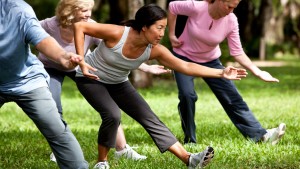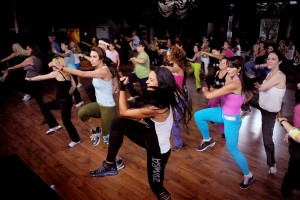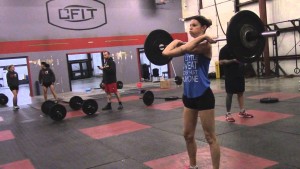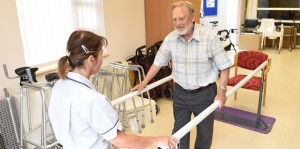
Physical activity or exercise can improve your health and reduce the risk of developing several diseases. Regular physical activity can not only improve your quality of life but can fetch health benefits which are immense especially on a long term.
“But, how much physical activity/ exercise is essential for a healthy living?”
Isn’t this a question that all of us have thought-off at some point of time?
If you are still confused about it, then this article will help you.
Adults (18-65 year-old):
- 30 minutes of moderate-intensity physical activity five days per week or 20 minutes of vigorous-intensity physical activity three days per week.
- 8-10 muscular strengthening exercises (8-12 repetitions) at least two days per week.
- Aerobic activity should be performed in bouts of at least 10 minutes duration.
Older adults (65+ year-old):
- The same recommendations as described for adults (outlined above) but considering the intensity and type of physical activity appropriate for older people.
- Exercises to maintain flexibility.
- Balance exercises
Children (5-17 year-old)
For children and young people, physical activity includes play, games, sports, transportation, chores, recreation, physical education, or planned exercise, in the context of family, school, and community activities. The recommendations to improve cardio-respiratory and muscular fitness, bone health, and cardiovascular and metabolic health biomarkers are:
- Children and young people aged 5–17 years old should accumulate at least 60 minutes of moderate to vigorous-intensity physical activity daily.
- Physical activity of amounts greater than 60 minutes daily will provide additional health benefits.
- Most of the daily physical activity should be aerobic. Vigorous-intensity activities should be incorporated, including those that strengthen muscles and bones, at least 3 times per week.
Children under 5 years
- Children of pre-school age who are capable of walking unaided should be physically active daily for at least 180 minutes (3 hours), spread throughout the day.
- All under 5 year of age should minimize the amount of time spent being sedentary.
What are moderate intensity physical activities?
Moderate activities will raise your heart rate and make you breathe faster  and feel warmer. One way to tell if you’re exercising at a moderate level is if you can still talk, but you can’t sing the words to a song.
and feel warmer. One way to tell if you’re exercising at a moderate level is if you can still talk, but you can’t sing the words to a song.
Some of the examples for moderate intensity activity are:
- Brisk walking
- Water aerobics
- Bicycling slower than 10 miles per hour
- Dancing
- Tennis (doubles)
What is vigorous intensity physical activity?
Vigorous activity makes you breathe hard and fast. If you’re working at this level, you won’t be able to say more than a few words without pausing for breath.
Some of the examples for vigorous intensity activity are:
- Race walking, jogging, or running
- Swimming laps
- Tennis (singles)
- Aerobic dancing
- Bicycling 10 miles per hour or faster
- Jumping rope
What is strength training?
 Activities for strength training should involve all the major muscle groups of your body such as legs, hips, back, chest, abdomen, shoulders, and arms.
Activities for strength training should involve all the major muscle groups of your body such as legs, hips, back, chest, abdomen, shoulders, and arms.
- One can use body weight, resistance bands or free weights for strength training.
- It should feel somewhere between hard and very hard for you to lift or push the weight.
- To gain health benefits, muscle-strengthening activities need to be done to the point where it’s hard for you to do another repetition without help.
How to plan an exercise program?
Now let us see how an exercise program has to be planned. One exercise session should have
• Warm up: A 10-minute period of total body movement exercises, such as calisthenics and walking slowly. Stretches and yoga can be included during this period.
• The exercise period consisting of exercises as described above (moderate/ vigorous intensity, strength training).
• Cool down: Should last 5 to 10 minutes and consist of total-body movements and static stretching. Breathing and relaxation exercises, pranayama can be done during this period.
Role of physiotherapy in physical activity
What does a physiotherapist do?
 Physiotherapists, being health care professionals who are the expert in movement and function, possess the knowledge, skills, and training to adapt physical activity to the population in general, and to persons who are coping with chronic disease in particular.
Physiotherapists, being health care professionals who are the expert in movement and function, possess the knowledge, skills, and training to adapt physical activity to the population in general, and to persons who are coping with chronic disease in particular.
The physiotherapist can adapt physical activity in accordance with the patient’s abilities and health status in a broad range of health conditions, e.g. children/people with obesity, persons with diabetes, lung disease and heart disease, persons with physical handicaps and persons with movement difficulties and chronic pain.
Consult our physiotherapists for a more detailed understanding of do’s and don’ts before starting a physical activity; risks of any injuries during exercise; precautions to avoid them.
For booking, appointment call us today!!!
If you have further questions then please contact us on.




